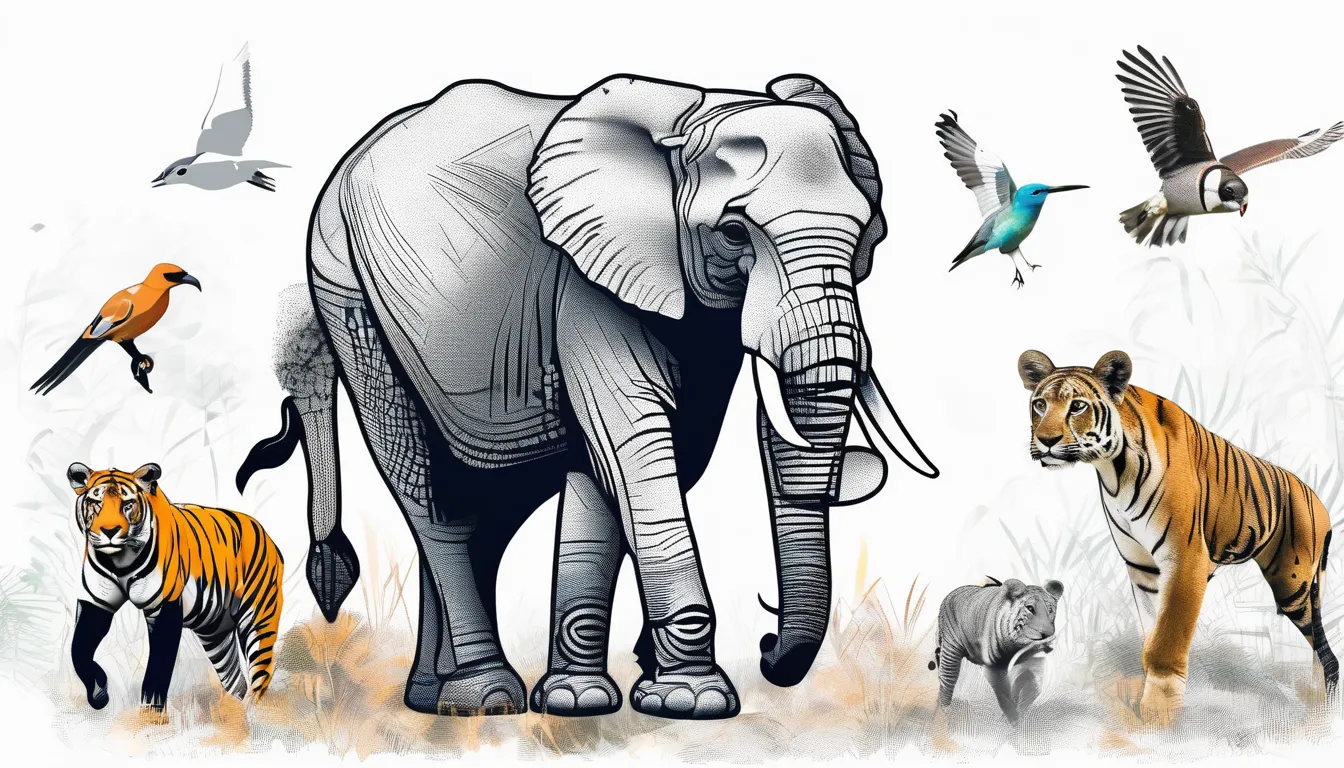As you consider the intersection of AI and wildlife conservation, you might find it intriguing how technology is reshaping traditional methods. Imagine utilizing drones that not only monitor animal populations but also provide insights into their health and habitat. With machine learning algorithms enhancing species identification and predictive analytics anticipating threats, the landscape of conservation is evolving rapidly. Yet, the question remains: how can these advancements be integrated effectively into existing frameworks to ensure lasting impact? Exploring this could reveal some surprising possibilities for the future of wildlife protection.
The Role of ai in wildlife in Conservation
Artificial intelligence (AI) is revolutionizing conservation efforts by providing innovative tools to monitor and protect wildlife. You can leverage AI to analyze vast amounts of data, helping you identify patterns and trends that would take humans much longer to recognize.
For instance, AI-driven algorithms can process images from camera traps, allowing you to track animal populations and behaviors with remarkable accuracy.
You’ll find AI particularly useful in predicting poaching threats and habitat changes. By analyzing satellite images and environmental data, AI can alert you to potential risks before they escalate. This proactive approach enables more effective resource allocation and intervention strategies.
Moreover, AI enhances community engagement by using chatbots and apps to educate the public about conservation issues. You can encourage local communities to report wildlife sightings or illegal activities, fostering a collaborative environment for wildlife protection.
Monitoring Wildlife With Drones
Drones are transforming wildlife monitoring by offering a bird’s-eye view of habitats that was once difficult to achieve. With their advanced technology, you can easily gather crucial data on animal populations and their behaviors without disturbing their natural environment. This non-invasive approach helps create a more accurate picture of wildlife health.
Here are four key benefits of using drones for wildlife monitoring:
- Increased Accessibility: Drones can reach remote and rugged areas where traditional monitoring methods may struggle, allowing you to observe wildlife in their natural habitats.
- Cost-Effective: Utilizing drones reduces the need for extensive manpower and expensive equipment, making wildlife monitoring more accessible to conservationists on a budget.
- Real-Time Data: Drones provide immediate feedback and high-resolution imagery, enabling you to spot changes in populations or habitats quickly.
- Enhanced Safety: By monitoring wildlife from the air, you minimize risks to both researchers and the animals, especially in environments where dangerous species may be present.
Machine Learning for Species Identification
Machine learning is increasingly revolutionizing species identification in wildlife research. You can harness its power to analyze vast amounts of data quickly and accurately, making identification easier than ever. Using algorithms, you can train models on image datasets, enabling them to recognize patterns and features unique to different species. This means you won’t need to rely solely on expert knowledge or time-consuming manual classifications.
By deploying machine learning tools, you can improve survey efficiency and reduce human error. For instance, when analyzing camera trap images, these algorithms can automatically flag potential species, allowing you to focus on verification and further research.
You can even apply deep learning techniques to process audio recordings, identifying animal calls with remarkable precision.
Moreover, as you gather more data over time, your machine learning models will continue to improve, adapting to new species or variations in behavior. This adaptability ensures that your conservation efforts remain relevant and effective.
In short, integrating machine learning into your species identification process can significantly enhance your research capabilities, leading to more informed conservation strategies and ultimately better protection for wildlife.
Predictive Analytics in Habitat Protection
Frequently employing predictive analytics can transform habitat protection efforts by allowing you to anticipate potential threats and environmental changes before they occur.
By analyzing historical data and current trends, you can make informed decisions that enhance your conservation strategies.
Here are four key benefits of using predictive analytics in habitat protection:
- Threat Identification: You can pinpoint areas at risk due to climate change, development, or invasive species, enabling targeted interventions.
- Resource Allocation: Predictive models help you allocate limited resources more effectively, ensuring that your efforts have the greatest impact.
- Restoration Planning: You can forecast the success of various restoration techniques, allowing you to choose the most effective methods for rejuvenating habitats.
- Monitoring Trends: Predictive analytics allows you to track changes over time, helping you evaluate the effectiveness of your conservation strategies and adapt as necessary.
Combating Poaching With Technology
Innovation plays a crucial role in combating poaching, as technology provides powerful tools to protect wildlife. You can leverage various technological advancements to safeguard endangered species and their habitats.
Drones, for instance, allow you to monitor vast areas of land from the sky, spotting poachers before they can strike. These unmanned aerial vehicles can cover difficult terrains that are often inaccessible to ground patrols.
Moreover, GPS tracking devices enable you to keep tabs on the movements of animals, ensuring their safety and providing real-time data to conservationists. You can also utilize smart collars that send alerts if an animal ventures into a dangerous area.
Camera traps equipped with AI can analyze images and detect human presence, helping rangers respond swiftly to threats. Additionally, mobile apps can facilitate community reporting, turning locals into active participants in wildlife protection.
Conclusion
AI is transforming conservation efforts, making it easier for you to protect wildlife. By harnessing technology like drones and machine learning, you can monitor animal populations and identify species with precision. Predictive analytics empower you to anticipate threats and allocate resources effectively. Plus, engaging local communities through mobile apps fosters a collaborative spirit in safeguarding biodiversity. Embracing these tools not only enhances your conservation strategies but also helps ensure a brighter future for our planet’s wildlife.


